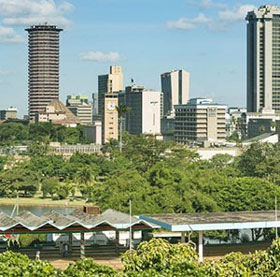- Argentina(Español)
- Österreich (Deutsch)
- Belgium(English)
- Belgique (Français)
- België(Nederlands)
- Brasil (Português)
- Canada(English)
- Canada (Français)
- Chile(Español)
- China(Chinese)
- Colombia(Español)
- Czechia(Czech)
- Denmark(Danish)
- República dominicana(Español)
- France (Français)
- Deutschland (Deutsch)
- Hungary(Hungarian)
- Italia(Italiano)
- 日本(日本語)
- Kazakhstan(Kazakh)
- Kazakhstan(Russian)
- Luxembourg(Français)
- Mexico(Español)
- Maroc(Français)
- Nederland(Nederlands)
- Panamá(Español)
- Perú(Español)
- Poland(Polish)
- Portugal (Português)
- Puerto Rico(Español)
- Romania(Romanian)
- Slovakia(Slovak)
- España (Español)
- Taiwan(Chinese)
- Tunisie(Français)
- Turkey(Turkish)
- Ukraine(Ukrainian)
- United States(English)
- Uruguay(Español)
- Venezuela(Español)
Risk Outlook February 2020-Kenya

The ruling Jubilee Party is likely to split ahead of the 2022 presidential election, as outgoing President Uhuru Kenyatta works to marginalize rival William Ruto. A fractious political environment may hamper policy-making, while difficulties in boosting revenue generation will ensure persistent budget deficits.
Security Environment
On January 8, 2020, al-Shabab militants attacked an airfield in Lamu County used by Kenyan and US militaries. Militants used rocket-propelled grenades and small arms, leading to the death of a US soldier.
US Africa Command stated that six civilian aircrafts operated by military contractors were damaged during the attack.
This followed an earlier attack on January 7 in Garissa County, in which 12 al-Shabab militants used improvised explosive devices in an attempt to destroy telecommunications masts belonging to South African telecom company, Safaricom. The attack was unsuccessful but four civilians were killed.
Since 2017, five telecom masts belonging to Safaricom have been destroyed in similar insurgency-style attacks.
On January 8, Al-Shabab also released a statement issuing a threat to attack tourists in Kenya.
In coming months there will be increased risk of attack on tourist hotspots in Kenya’s coastal northeastern region, including hotel and beach resorts on Lamu Island, and resorts in Mombasa, Malindi, and Diani Beach.
In October 2019, Kenya's anti-terror police unit reported that al-Shabab militants had entered the country and planned to attack cargo terminals in Mombasa port, the Moi International Airport, and the Mombasa-Nairobi Standard Gauge Railway terminus in Miritini.
Trading Environment
In 2020, Kenya's economy is likely to outperform in the region, with real GDP growth forecast at 5.7%.
Economic performance will be supported by elevated public investment into infrastructure projects, with real growth in the construction industry expected to average 6.2% in 2020-21.
In November 2019, the government also removed a cap on commercial bank lending rates, which had been in place since 2016. The cap weighed on the country’s credit growth, and its removal should boost loan issuance, supporting increased investment and private consumption over the coming quarters.
The government may fail to meet its own fiscal targets in 2020, as it struggles to boost revenue generation. For example, in the first three months of the 2019-20 fiscal year, government revenue was KES424 billion, below the target of KES495 billion.
This was partly a result of sluggish performance in the agricultural sector amid poor weather conditions.
The government is likely to remain committed to public spending on infrastructure projects under its "Big Four" agenda, ensuring the fiscal deficit remains elevated at 6.9% of GDP in the 2020-21 fiscal year. For example, in December 2019 President Uhura Kenyatta approved an additional KES73.4 billion in funding to plug shortfalls.
Investment Environment
 Pricing Outlook
Pricing Outlook
1% p.a
CEND Risk Pricing Range
1.65% p.a
Sovereign Credit Risk Pricing Range
Kenyatta reshuffled his cabinet on January 14, as part of efforts to weaken rival, and deputy president, William Ruto.
Kenyatta dismissed Agriculture Cabinet Secretary Festus Kiunjuri, a key ally of Ruto, and replaced him with Industry, Trade and Cooperatives Cabinet Secretary Peter Munya.
Ruto's eroded support in government increases the likelihood that he will leave the ruling Jubilee Party.
A new party led by Ruto would seek to oppose Kenyatta's key policy aims of increasing tax revenue and rationalizing budget.
Kiunjuri is likely to be the subject of several corruption investigations in 2020, increasing the risk of contract review for businesses connected to Kiunjuri and his associates.
On January 14, 2020, Kenyatta announced an investigation into the governance of the Kenya Tea Development Agency (KTDA). Kiunjuri is facing corruption allegations after it emerged that a payment of US$17.8 million was withdrawn from the accounts of the strategic food reserve trust fund in 2019.
Rating Outlook: Terrorism; Sovereign Credit Risk; Legal and Regulatory Risk.
Key Takeaways
- On January 8, 2020, al-Shabab militants attacked an airfield in Lamu county used by the Kenyan and US militaries.
- On January 8, Al-Shabab also released a statement issuing a threat to attack tourists in Kenya. Over the coming months, there will be an elevated risk of attack on tourist hotspots in Kenya’s coastal northeastern regions.
- Economic performance will be supported by increased public investment into infrastructure projects, with real growth in the construction industry expected to average 6.2% in 2020/21.
- President Uhuru Kenyatta reshuffled his cabinet on January 14, as part of efforts to weaken rival, and deputy president, William Ruto.
- The ruling Jubilee Party is likely to split ahead of the 2022 presidential election.
Placeholder for editing the content for: marsh/components/content/rightrailtext
Placeholder for editing the content for: marsh/components/content/rightrailtext
Placeholder for editing the content for: marsh/components/content/rightrailtext
Placeholder for editing the content for: marsh/components/content/rightrailtext
Placeholder for editing the content for: marsh/components/content/rightrailtext
Placeholder for editing the content for: marsh/components/content/rightrailtext
Related Resources
- Risk in Context Podcast: Shifting Political and Credit Risks
- Risk in Context Podcast: Shifting Political and Credit Risks
- Oil Price Dynamics: Economic Risks in the Middle East and Africa
- Political Risk Map 2020
- Political Risk Map 2020: Mid-Year Update for Middle East and Africa
Placeholder for editing the content for: marsh/components/content/rightrailtext